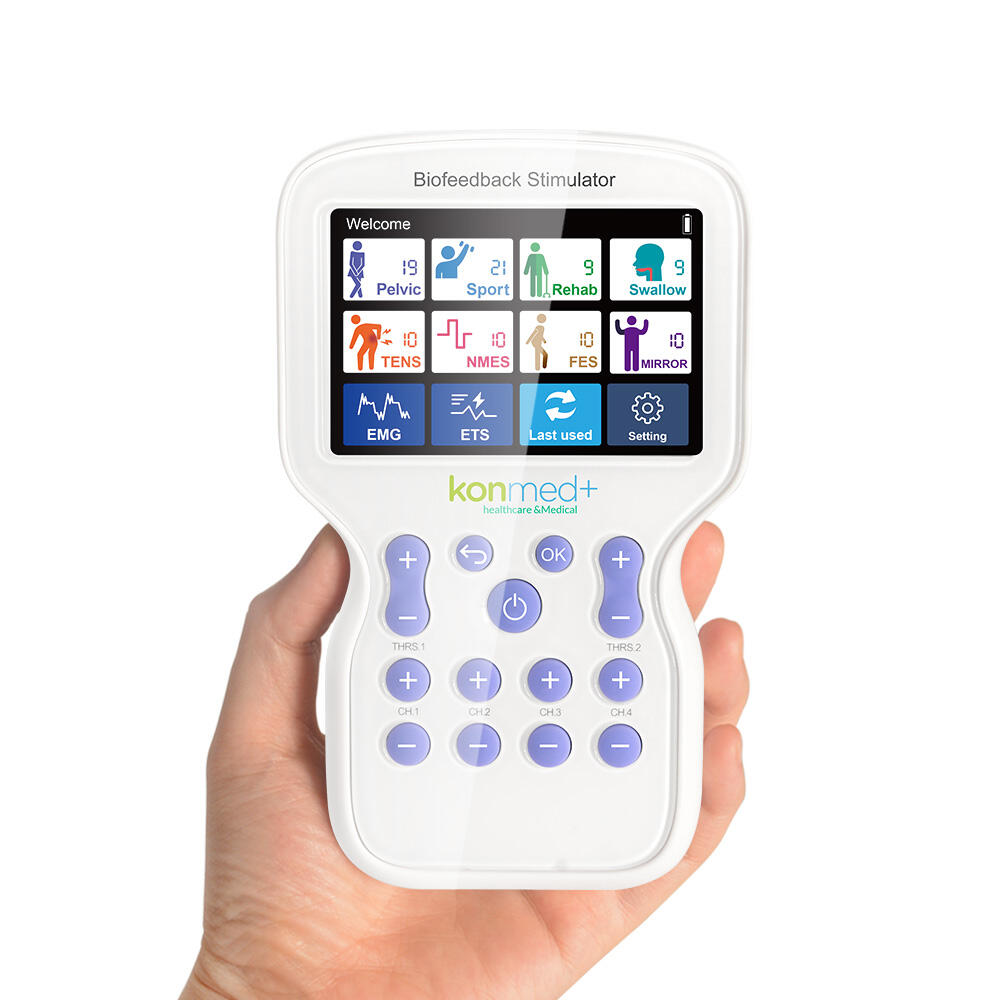In the ultimate competition of elite sports, victory often comes down to the smallest margins. When physical fitness and technique have peaked, what else can provide a decisive advantage? The answer may lie within the athlete's brain.
Biofeedback, a technology once confined to medical rehabilitation centers, has quietly become a "secret weapon" for elite athletes and top sports teams. It is not just a tool but a training philosophy—using scientific methods to bring unconscious physiological processes under conscious control, thereby achieving perfect mind-body synergy.
This article will explore in depth how biofeedback is revolutionizing the way athletes train and recover, helping you understand this technology and see why it is at the core of the future of sports science.
Part 1: Understanding Biofeedback - The Athlete's "Physiological Dashboard"
Simply put, biofeedback is a process that uses sensors to convert imperceptible internal physiological signals—such as brainwaves, heart rate, muscle tension, skin conductance, and breathing—into real-time visual or auditory feedback.
Imagine this: You're trying to relax, but you're not sure if you're truly relaxed. Biofeedback equipment acts like a high-precision "physiological dashboard," allowing you to clearly "see" your level of tension:
When your heart rate is too high, the curve on the screen fluctuates wildly.
When your muscles are tense, you hear a harsh alert sound.
When you successfully enter a focused state, you see a pleasing animation.
This process enables athletes to:
Increase Awareness: Recognize the direct link between thoughts, emotions, and physiological states (like muscle tension, spiking heart rate).
Learn Control: Through repeated practice, learn how to use mental techniques (like guided imagery, breath adjustment) to actively regulate these physiological signals.
Achieve Self-Regulation: The ultimate goal is to be able to deploy these skills to maintain optimal performance even in high-pressure competition environments, without the need for equipment.
Part 2: Enhancing On-Field Performance: Four Keys from "Good" to "Great"
1. Optimizing Neural State: Entering the "Zone" or Flow State
Core Technology: Electroencephalography (EEG) Biofeedback, also known as Neurofeedback.
The "flow" state is the perfect realm athletes dream of: highly focused, effortless action, and a distorted sense of time. Neurofeedback can directly train the brain to produce the brainwaves associated with this state.
How it Works: Sensors monitor your brainwave activity. For example, in sports requiring calm focus (like shooting, golf putting, free throws), the system teaches you how to enhance Sensorimotor Rhythm (SMR) waves associated with relaxed concentration, while reducing high-frequency Beta waves linked to anxiety and distraction.
Application Example: A shooter learns to maintain a calm brain state amidst noise, ensuring absolute stability at the moment of trigger pull. A basketball team uses neurofeedback to train players' focus, improving free-throw accuracy at critical moments.
2. Mastering Cardiorespiratory Synergy: Maximizing Energy Efficiency
Core Technology: Heart Rate Variability (HRV) Biofeedback.
HRV refers to the subtle variations in the time interval between heartbeats. It is a gold standard indicator of autonomic nervous system balance (the balance between the sympathetic "fight" and parasympathetic "rest" systems). A high HRV indicates a body that is more adaptable, recovers better, and is more resilient to stress.
How it Works: Through guided breathing exercises, athletes learn to synchronize their breath with their heartbeat, thereby maximizing HRV. This is often achieved through a video game-like interface where you must "steer" a wave or balloon on the screen using slow, deep, and rhythmic breathing.
Application Example: A long-distance runner uses breath rhythm adjustment to quickly recover from the pain of crossing the anaerobic threshold during a race. A soccer player uses brief HRV training at halftime to rapidly lower their heart rate and conserve energy for the second half.
3. Achieving Precise Muscle Control: The Perfect Balance of Engagement and Relaxation
Core Technology: Electromyography (EMG) Biofeedback.
Unnecessary muscle tension is a huge waste of energy and can disrupt the fluidity of technical movements. EMG biofeedback provides a precise readout of the tension level in specific muscle groups.
How it Works: Sensors are placed on the target muscles (e.g., a sprinter's quadriceps or a swimmer's trapezius). Athletes learn how to efficiently activate the required muscles during exertion and how to fully relax them when not needed.
Application Example: A cyclist discovers that their leg muscles remain overly tense during the non-power phase of pedaling. Through training, they learn to completely relax during specific parts of the pedal stroke, significantly improving endurance. A tennis player corrects unnecessary shoulder tension during their serve, increasing ball speed and preventing shoulder injury.
4. Managing Competitive Anxiety: Transforming Pressure into Power
Core Technology: Electrodermal Activity (EDA/GSR) and Respiratory Biofeedback.
Pre-competition nerves are normal, but excessive anxiety can lead to "choking." Skin conductance can be an extremely sensitive measure of emotional arousal levels.
How it Works: Athletes expose themselves to simulated high-pressure situations (e.g., watching a video of their own past mistakes) and learn to lower their skin conductance levels through cognitive reappraisal and breathing techniques, maintaining calmness.
Application Example: A gymnast on the balance beam, upon sensing the early signs of rising anxiety, immediately initiates a pre-set breathing pattern to complete the routine smoothly. A diver uses biofeedback skills before a dive to transform nervousness into focused excitement.
Part 3: Accelerating Physical Recovery: The Scientific Bridge from "Fatigue" to "Regeneration"
Training effects occur during recovery. The application of biofeedback in the recovery phase is equally powerful.
1. Activating the Parasympathetic Nervous System: Initiating Deep Recovery
After intense training, the body needs to switch from the sympathetic nerve-dominated "fight mode" to the parasympathetic nerve-dominated "repair mode." HRV biofeedback is one of the most effective tools for facilitating this switch.
Practice: Performing 10-15 minutes of HRV-guided breathing after a training session can significantly lower resting heart rate, promote blood circulation, deliver oxygen and nutrients to damaged muscles, and accelerate the removal of metabolic waste products.
2. Optimizing Sleep Quality: The Ultimate Body Repair Tool
Sleep is the ultimate recovery method. Biofeedback can help athletes identify and improve physiological factors affecting sleep.
Practice: Using HRV or neurofeedback devices for relaxation training before bed can help "quiet" a busy mind, reduce sleep latency, and increase deep sleep duration.
3. Pain Management and Inflammation Control
By training the brain to regulate pain perception and using relaxation techniques to improve local blood circulation, biofeedback can serve as an adjunct for managing post-training pain and minor inflammation.
Part 4: How to Integrate Biofeedback into Your Training Plan?
Baseline Assessment: First, measure your key physiological metrics (HRV, EMG, EDA) at rest, under standard load, and under maximal load to establish a personal baseline.
Skill Acquisition Phase: Train in a quiet, distraction-free environment, at least 3-4 times per week for 20-30 minutes per session. The focus here is on mastering control skills, not on practicing while fatigued.
Skill Application Phase: Once proficient, start applying these skills during warm-ups, between training intervals, or in simulated competition scenarios. For example, practice HRV breathing between sets during strength training.
Skill Automation Phase: The ultimate goal is to automatically deploy these skills during real competition without conscious thought, making them part of your athletic instinct.
Important Note: While many consumer-grade biofeedback devices are available, getting started under the guidance of a sports psychologist or a physical therapist trained in biofeedback is highly recommended to ensure you are on the right track and avoid developing misunderstandings or bad habits.
Conclusion: Embracing the New Era of Mind-Body Integrated Training
Biofeedback signifies a paradigm shift in sports training: from focusing solely on the external, physical body to deeply exploring the internal, psychophysiological world. It empowers athletes, making each one a scientist and engineer of their own body and mind.
This is no longer just about "training harder," but about "training smarter." By listening to the subtle signals their bodies send and learning how to respond, athletes can break through performance plateaus, extend their athletic careers, and step onto the field with unprecedented calm and confidence.
The future belongs to athletes who can best integrate body and brain. Biofeedback is the bridge to that future.





